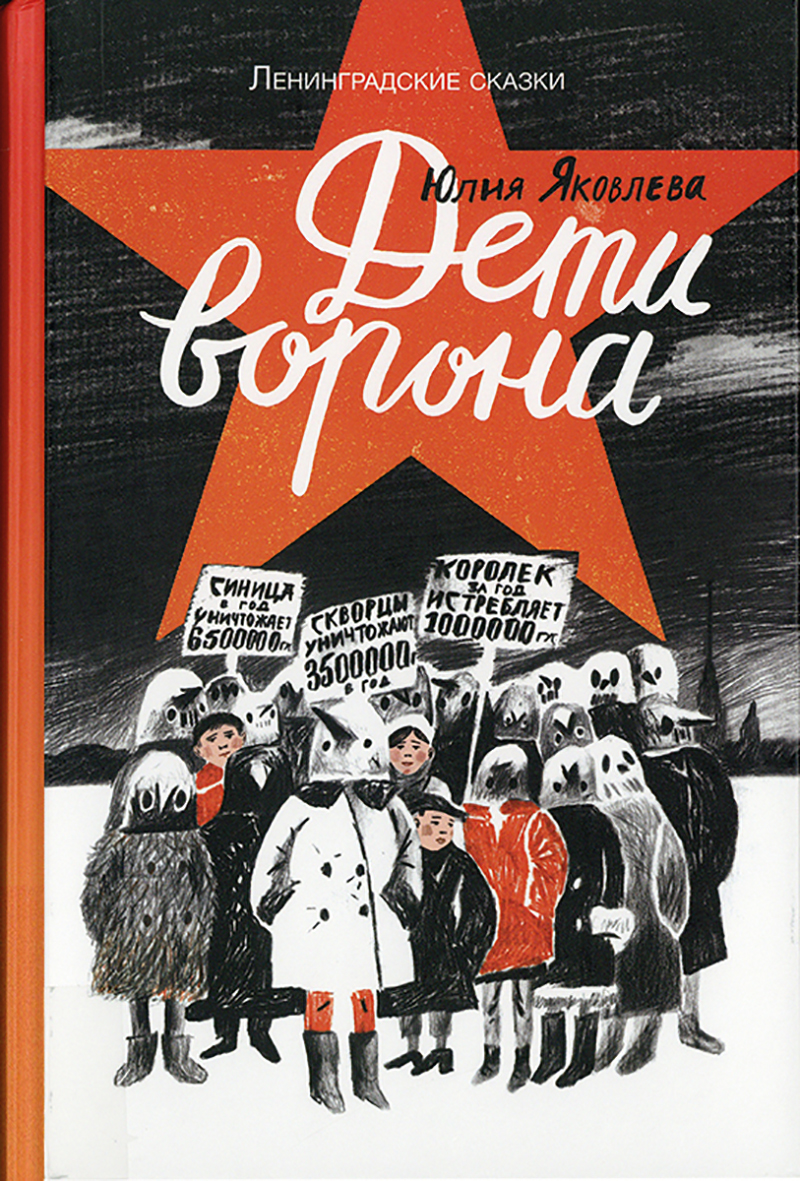The Raven’s Children
Written by Yulia Yakovleva
Illustrated by Vlada Myakonkina
Samokat, 2016, 264 pp.
ISBN-13: 978-5-91759-444-6
How do you share with the younger generation the truth about difficult moments in the history of their country? In contemporary Russia, a new, open-minded, and factual approach to recent history is especially important when history is told to children. The Raven’s Children by Yulia Yakovleva is one of the first attempts to depict the most painful period of twentieth-century Russian history in a tween’s book. The story is set in Leningrad in 1937, which was the horrible year of Stalin’s arrests and executions of innocent people. For decades, this part of history was not told to children in a form they could understand and deal with. The Raven’s Children is the first book of the series called The Leningrad Tales. The second book in the series, Stolen City, was also published in 2016. It tells about the Siege of Leningrad during the Second World War. Altogether, Yakovleva, a journalist and a writer, plans to write three more children’s books set in Soviet Leningrad.
In The Raven’s Children, seven-year-old Shurka and his nine-year-old sister, Tanya, are left alone after their father and mother are arrested. The younger brother, three-year-old Bobka, is taken to the state orphanage at the time of his mother’s arrest, but the secret police officers do not notice the two older children sleeping in a hidden room behind the wardrobe. The neighbors in this huge communal apartment whisper among themselves that “last night a Black Raven took the neighbor away” (p. 49). Shurka and Tanya overhear them, but they do not understand that the Black Raven is a nickname for the black secret police car that transports people arrested at night. Many of arrests made during the time of Stalin’s purges were made at night to intimidate people even more. The brother and sister imagine that the neighbors are talking about a real bird, an enormous black raven who made their parents disappear. They try to talk to other birds, to crows, to sparrows, to a magpie, and to a swan in a beautiful park near the Neva River. The children want the birds to help them to find the Black Raven. The author skillfully mixes fairytale and reality together in this slowly unfolding story.
The book is centered on the whereabouts of Shurka, who is eventually also taken to the state orphanage for children of “enemies of the people.” This is how Stalin and his henchmen referred to anyone they arrested without reason. Everything is grey in that orphanage—gray food, gray walls, and gray days. Everyone looks the same and everyone is changing into the Raven’s children. They become children who hate their parents as traitors and enemies. Above all, they love the Raven, the children’s best friend—Comrade Stalin. Even though Shurka is able to make his escape from the orphanage, he needs to find and save his younger brother. In the sequel, Stolen City, the children, adopted by their aunt, live through the starvation and horror of the siege of the city.
The Raven’s Children and Stolen City may be paired with Breaking Stalin’s Nose by Eugene Yelchin (2013), which was translated into Russian several years ago. Another Russian book on Stalin’s oppression is Sugar Kid by Olga Gromova (2014), which was reviewed in a previous issue: http://wowlit.org/. Further recommended reading about the siege of Leningrad might include Symphony for the City of the Dead: Dmitri Shostakovich and the Siege of Leningrad by M.T. Anderson (2015). The Boy at the Top of the Mountain by John Boyne (2016) evokes the topic of the corruption of the child’s mind–in this case, by Hitler.
Olga Bukhina, International Association for the Humanities, New York, NY
WOW Review, Volume IX, Issue 3 by Worlds of Words is licensed under a Creative Commons Attribution-NonCommercial-ShareAlike 4.0 International License. Based on work at https://wowlit.org/on-line-publications/review/ix-3/

